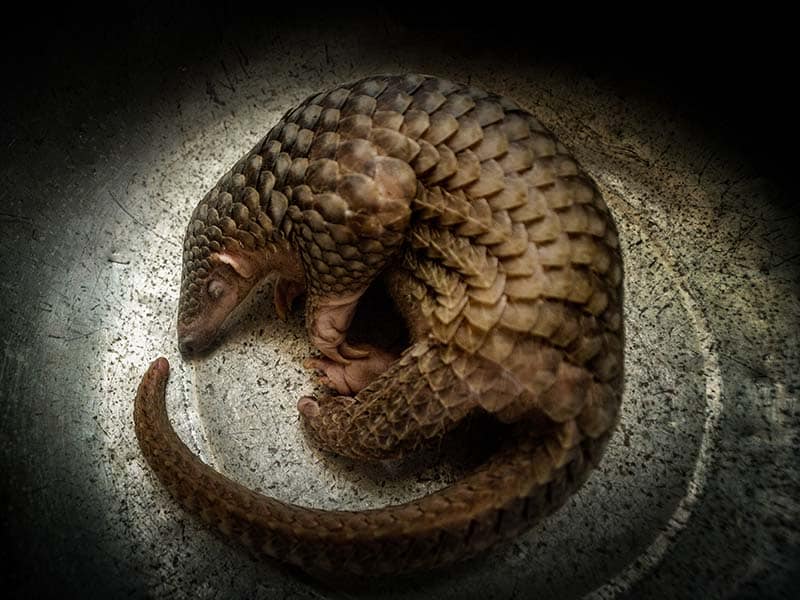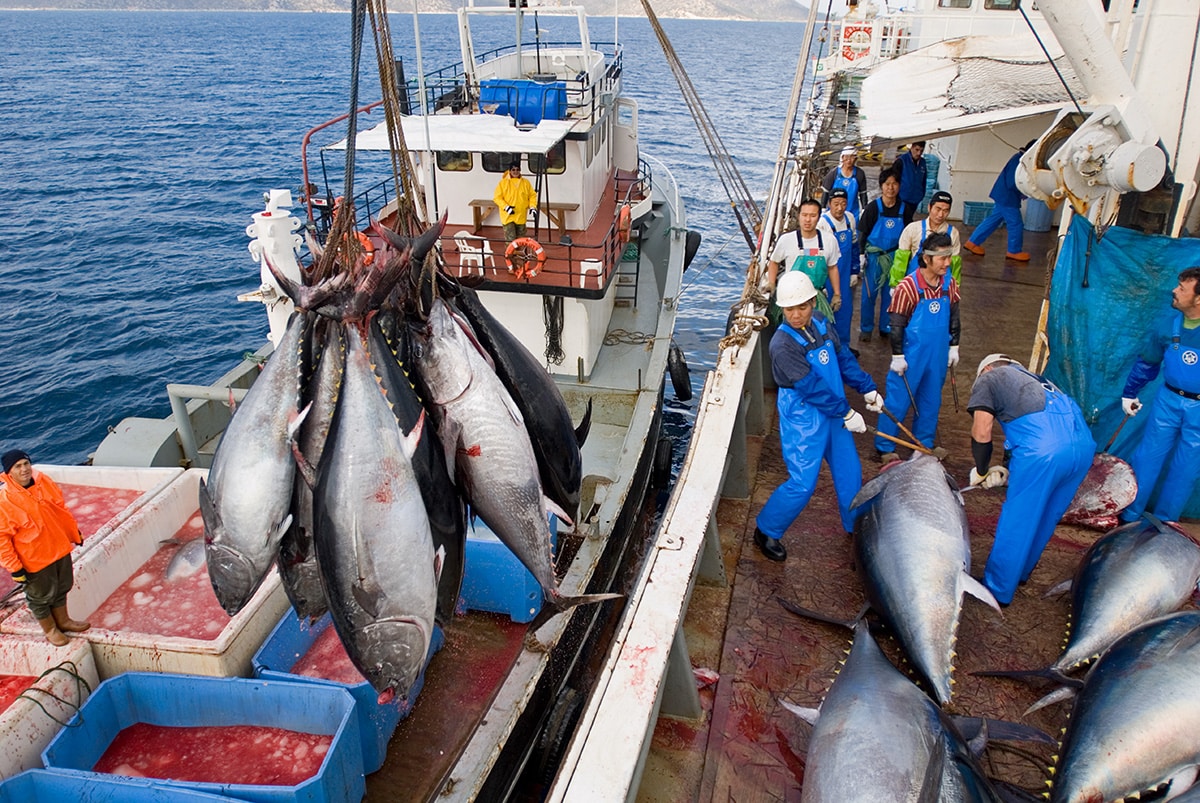Why are species in decline?
Species Loss
Recent scientific analyses estimate the current rate of extinction to be around 1,000 times higher than the natural background rate (Pimm et al., 2014), a reality which sees species go extinct every day. Of the 93,579 species presently assessed by the IUCN Red List, which acts as a barometer for life on Earth, 27 per cent are adjudged to be threatened with extinction (IUCN Red List, 2018): more than one fifth of those are Critically Endangered species. Furthermore, in addition to species extinction, species abundance has been reduced dramatically in the last century. The Living Planet Index (WWF, 2016) estimates the loss of vertebrate abundance between 1970 – 2012 to be around 58 per cent, based on 14,152 populations of 3,176 species monitored. These trends are as dramatic as they are harrowing, and such is the scale of biodiversity loss that scientists have begun to describe the current species extinction as the sixth mass extinction event in the 3.4 billion year history of life on Earth, one driven by homo sapiens.

A sunda pangolin in a rescue centre run by Save Vietnam's Wildlife. Image © Chris Scarffe
Whilst conservationists are often warned not to make everything sound too depressing, it is difficult to present the current statistics on species extinction and decline in any other way. Yet as our knowledge grows, so does the realisation that we are actually capable of doing something about this. Earth’s fate is not consigned. Indeed, the present extinction crisis is not blind, in almost all cases we know both how and why biodiversity is decreasing, which brings hope that we can do something about it.

Image: © Hutan
An area of rainforest cleared for agriculture in Malaysian Borneo. Image © Hutan
Habitat Loss
The principal driver of biodiversity loss has been the loss of the habitat. Human beings have altered the natural environment over the past few centuries at an unprecedented pace. For example, since the pre-industrial era 32.2% of global forest cover has been lost (Adams, 2012), and if all dams currently planned or under construction are built then natural hydrological flows would be lost from 93% of all river volume (WWF, 2016). Going back to our understanding of biodiversity, that difference between and amongst species reflect organisms’ adaptations to particular environments, it is easy to comprehend how habitat loss drives species to extinction, as where the environment these species are adapted to survive in is suddenly replaced by one in which they are not, they can no longer subsist.
It is true that organisms have the ability to adapt to a changing environment, but the evolutionary process is in the main an incremental one, unfolding over thousands of years, and whilst some species show an astonishing ability to quickly adapt to human-altered environments, these species are the exception rather than the rule, as many slip silently towards the precipice of extinction.
Overexploitation
The second major driver of extinction has been the overexploitation of the natural environment, something ultimately driven by the establishment of a false dichotomy between humans and the natural environment, our artificial removal from nature meaning we no longer associate our fate as tied to the health of the Planet Earth. This has manifested in the plunder of resources at the expense of environmental integrity and the persecution of species to feed an economy in wildlife trade which, including illegal logging, is now estimated to be ‘worth’ $175 billion per year (Nelleman et al., 2016). The environment has simultaneously been treated as a larder and lavatory, its resources assumed infinite, indeed to suggest otherwise has been taboo, bothersome. As nature has been exploited species and diseases have also been transplanted into new environments, to which they are alien, something which has wreaked havoc by once again rapidly altering ecosystem dynamics, introducing pressures which species have not evolved to overcome.

Overfishing is having a devastating impact on many marine species. Image: Shutterstock
Overfishing meanwhile is perhaps one of the most stark examples of overexploitation having direct and devastating impacts on species populations. Since the era of industrial fishing began species such as Pacific Bluefin Tuna have seen their populations fall by as much as 97.4% – supply tracking demand to truly unsustainable levels. There is an irony in that this overexploitation could see some of the species we find most wondrous, most captivating, or even most valuable, disappearing from Earth.

The impacts of climate change are increasingly felt by people and species alike. Image: iStock
Climate Change
Over the past three decades climate change has been elevated to a matter of international concern as governments and publics have begun to recognise the dramatic changes which greenhouse gas emissions on Planet Earth. Whilst climate change unquestionably poses one of the greatest present threats to humanity, its potential impact on other species, and the ecological integrity of the planet as a whole, is also cause for concern. Historically, climate change has been a key factor in mass extinction events with species unable to adapt to rapid changes to the environments in which they have evolved to survive. Those species which are less mobile, have smaller geographic ranges, and more highly specialised habitat requirements face the greatest risk of extinction (IUCN). However when entire natural systems such as the flow of glacial rivers, the movement of ocean currents and or the boundaries of desert environments shift, truly vast numbers of species are at risk.
The impacts of climate change are also not only something for the future – recent studies have suggested climatic shifts are already taking effect with half of threatened terrestrial mammals and a quarter of threatened birds negatively impacted (Pacifici et al., 2017) whilst in Earth’s oceans changes in acidity and temperature have been significant factors in the estimated loss of 30-60% of coral reefs in the post-industrial era (WWF 2016) . This is a warning that even if we start to take action towards successfully reducing GHG emissions and containing climate change, mitigation efforts will still be required to support species threatened by the changes to Earth’s climate which existing GHG emissions have already committed us to.
Non-native Species and Disease
One of the most overlooked yet significant changes that human civilisation has brought to Earth is transport, our ability to traverse what had formerly been vast distances. This revolution has not only seen humans spread across the globe, but also the transport of other species, a process formerly regulated by natural vectors such as insects, birds, the wind or ocean currents. These species have reached new environments, breaking free of their previous ranges as a result of both intended and accidental human introductions. When expanding into new environments, many non-native species are simply unable to themselves survive, however a minority find their characteristics suited to the new habitat, and their colonisation can wreak havoc for native species. One powerful example of how destructive this can be is the case of the introduction of the Nile Perch, a large predatory fish, into Lake Victoria. As the perch population increased in the 1980s it is estimated to have been a direct or indirect cause in the extinction of 200-400 cichlid species endemic to the Lake, which were simply not adapted to evade predation from the Perch (Sodhi et al., 2009).

The cane toad, an invasive species introduced to Australia in the 1930s. Image: Shutterstock
Invasive species are also not always as conspicuous as the Nile Perch, others such as the Emerald Ash Borer are also connected with extinction risk for native species – not just through direct predation, but through changing the ecological dynamics of an area, shifting them away from those native species are adapted to survive in.Furthermore, the transmission of disease adds yet another deadly dynamic to this driver of extinction. For example, the spread of chytridiomycosis, a disease resulting from infection with a fungus , has been a key driver in amphibians becoming one of the most threatened groups of animals. The disease interferes amphibians’ ability to absorb water and release salts through their , and has been described as “the worst infectious disease ever recorded among vertebrates in terms of the number of species impacted, and its propensity to drive them to extinction” (Gascon et al., 2007). Preventing the transmission of non-native species and diseases to new environments is therefore a priority for preventing further biodiversity loss and extinction, whilst costly work to remove invasives and eradicate disease will also be needed to save some species already under threat.

Pollution is a major contributor to global biodiversity loss. Image: Shutterstock
Pollution
Another factor which has contributed to the loss of species diversity and abundance which has unfolded over the last century is pollution. As well as the extraction of Earth’s resources, the discharge of waste back into the environment poses a significant threat to many species. Some alarming statistics include the fact that 80% of wastewater is currently discharged back into the natural environment without any form of treatment, whilst marine biologists have recently warned that unless the problem is abated, by 2050 there will be more plastic in the Earth’s oceans than fish. Some more obscure examples include light pollution which can disrupt vital habits and routes of migratory birds, and sound pollution from shipping lanes which drowns out important communications channels for marine species. The impacts of pollution can be complex and very hard to tackle, for example, large swathes of coastal areas are now suffering from ‘dead zones’ which form as a result of fertilisers washing into the ocean and causing an overproduction of plant matter which in turn deprives an entire area of oxygen.
Like the other drivers of extinction listed here, pollution speaks to humanity’s increasing impact on almost every corner of the planet, the extent of which has resulted in geologists beginning to recognise a new geological epoch; the Anthropocene. It is not impossible for humans to co-exist harmoniously with nature, however our present trajectory is placing too heavy a burden on the natural world, and biodiversity loss is a sentinel that this is clearly taking its toll.
References:
Adams E.E, 2012, World Forest Area Still on the Decline, Eco-Economy Indicators, Forest Cover, Earth Policy Institute, Accessed 03.01.17, https://www.earth-policy.org/indicators/C56/forests_2012
Nelleman C, Henriksen R, Kreilhuber A, Dtewart D, Kotsovoi M, Raxter P, Mrema P, Barrat S, 2016, The Rise of Environmental Crime – A Growing Threat to Natural Resources, Peace, Development and Security, UNEP-INTERPOL Rapid Response Assessment, UNEP https://unep.org/documents/itw/environmental_crimes.pdf
Pimm S.L, Jenkins C.N, Abell R, Brooks T.M, Gittleman J.L, Joppa L.N, Raven P.H, Roberts C.M, Sexton J.O, The biodiversity of species and their rates of extinction, distribution, and protection, Science, Vol. 344, Issue 6187
Urban M.C, 2015, Accelerating extinction risk from climate change, Science, Vol.348, Issue 6234, https://science.sciencemag.org/content/348/6234/571
WWF, 2016, Living Planet Index, WWF International, Accessed 03.01.17, https://awsassets.panda.org/downloads/lpr_living_planet_report_2016.pdf
